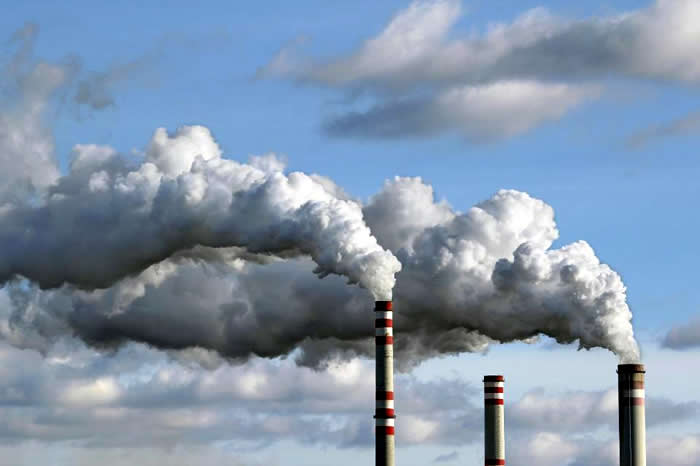What is Nigeria’s coal policy? The National Energy Master Plan (NEMP) of 2014 foresaw a major role for coal… It calculated the role of coal, and its potential contribution to Nigeria’s total electricity supply under different national economic growth scenarios, such as 7%, 10%, 11.5% and 13% annual GDP growth rates. NEMP (2014) reveals which path Nigeria is towing with respect to coal power.
In an era of climate change, the media is flooded with news of disaster about the catastrophic effects of fossil fuels such as coal and petroleum in inducing global warming. As such, a number of countries are beginning to cut down on their exploration, mining and use of coal as a source of fuel, energy and power.
While this is happening, some other countries are finding that they have huge reserves of coal, and in a bid to meet their energy needs they are towing the path of expanding their coal industry, apparently damning the realities of the associated greenhouse emissions, the resulting global warming and climate change. Also scientifically proven, are the environmental and health risks [insert link to article on health impacts of coal titled: “Doubts on Sustainability of Coal-to-Power”] associated with coal mining and coal power generation, which portend hazardous consequences for the people, if not well managed.
But which path is Nigeria towing in expanding its electricity generation? More of coal? Or less of it? A look at the National Energy Master Plan (NEMP, 2014), a reviewed draft policy document of the Energy Commission of Nigeria, reveals much.
The NEMP recognizes that electricity is very crucial to Nigeria’s economic and social development. In the master plan, various economic growth scenarios were considered (with year 2000 as the base year) in projecting the intended contribution of coal to Nigeria’s electricity generation fuel mix in the near future. These scenarios include the 7%; the 10%; 11.5% and the 13% annual GDP growth rate scenarios; with each of these predicated on the assumption that more power would be required under stronger economic conditions, and consequently more coal power would be required. Coal-to-electricity projections in the 7% and 13% scenarios (the least and the most optimistic ones) are hereafter expounded.
Coal power in the 7% growth scenario
This scenario which considers an economic growth rate of 7% per annum, with an expectation that per capita energy demand would rise from the current 200 kWh per year to about 4000 kWh per year in the late 2020s. Under this circumstance, the NEMP projects that coal would account for about 6,527 MW of Nigeria’s electricity by 2020 and almost 10,984 MW by 2030. These account for 12.5% and 6.8% respectively of the mix of projected total electricity supply of 52,174 MW and 161,411 MW by 2020 and 2030 respectively.
Coal power in the 13 % growth scenario
This very optimistic scenario is one in which very high economic development is envisaged i.e. a more industrialized Nigerian society with an annual GDP growth rate of 13% per annum. With such economic progress, manufacturing is expected to contribute to about a quarter of the economic output, with energy demand per capita hiking to as high 6,000 kWh per annum. If this set of circumstances prevails, the government projects an expansion of coal-to-power to about 12,122 MW of the country’s electricity generation capacity by 2020, and as much as 20,399 MW of coal-based electricity by the year 2030. These account for 13.7% and 6.5% respectively of the total electricity supply projections of 88,698 MW by 2020 and 315,518 MW by 2030.
These projections of moving coal-fired electricity generation to as much as between 12.5% and 13.7% by 2020 of the electricity fuel mix (depending on which growth scenario is being considered) shows that the government in 2014 intended to channel significant investments into the expansion of coal power in the period leading up to 2020. Thereafter, the ratio of coal-fired electricity would reduce to little over 6% within the country’s energy mix, with outputs anywhere between 11,000 and 20,000MW.
Amongst a number of intervention strategies, the NEMP seeks to expand and intensify coal exploration and production activities, especially through completion of the process of privatizing the sector. Also key in the NEMP’s coal power expansion plans is a drive to incentivize indigenous and foreign coal investors and entrepreneurs through fiscal instruments such as tax holidays to cater for both pre- and post- exploration needs. Also important is the planned revival of coal-based industries such as cement factories and the Ajaokuta steel plant, as well as a move to develop the appropriate legal framework to grow these industries. It should be noted that these are only documented plans; implementation of these incentives/initiatives by the federal government remains to be ascertained.
Clearly, coal remains a major part of the government’s plan to meet Nigeria’s demanding energy needs. Nevertheless, whatever initiatives that may be taken to pursue national energy goals, the holistic economic and socio-ecological costs, impacts and consequences of coal power [insert link to Coal Atlas here] relative to alternative energy types must be weighed, in deciding the overall energy path for the country.
References:
The National Energy Master Plan, 2014 (pp. 8 – 13; 33 – 34; 37 – 40)
Attachment/Links:
The National Energy Master Plan (2014)
http://www.energy.gov.ng/index.php?option=com_docman&task=doc_download&gid=108&Itemid=49
Save




